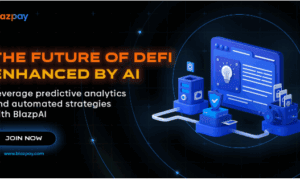GPU cloud computing is rapidly becoming the backbone of modern innovation. From artificial intelligence and machine learning to 3D animation, scientific simulations and data analytics, organizations are increasingly relying on GPU cloud computing to accelerate performance and reduce time to insight. As high-performance computing needs continue to grow, GPUs in the cloud offer a scalable and more cost-efficient pathway for businesses, developers and researchers to process massive workloads without investing in expensive hardware infrastructure.
In recent years, industries across the board have embraced data-heavy workflows. Traditional CPUs are great for general execution tasks but they fall short when it comes to parallel processing demands. This is exactly where GPU cloud computing excels. With thousands of cores designed to handle simultaneous operations, GPUs can drastically improve processing speeds for computing-intensive applications.
What Makes GPU Cloud Computing So Transformational
The ability to tap into GPU-powered computing resources over the cloud is transforming how organizations build and scale technologies. Instead of purchasing and maintaining costly GPU servers, companies can now instantly provision cloud based GPU instances that match their needs at any given moment. This shift eliminates physical limitations, lowers IT infrastructure costs and democratizes access to advanced computational power.
Businesses can now run deep learning training models, render graphics for VFX production, analyze big data and process sophisticated workloads without the fear of hardware bottlenecks. GPU cloud computing empowers smaller teams and startups with enterprise-class computing power, leveling the playing field in the technology landscape.
Scalability is another key factor that makes cloud GPUs appealing. If a workload expands beyond initial expectations or peak demand surges suddenly, additional GPU resources can be added instantly through the cloud platform. This elasticity ensures performance stability while only paying for what is used.
The Rise of AI and Why GPUs Matter
Artificial intelligence and machine learning are at the heart of today’s digital revolution. Training large neural networks can take days or weeks using CPU based infrastructure, but GPUs drastically reduce training time by handling multiple simultaneous operations. Faster iteration means faster innovation.
Whether companies are working with recommendation engines, autonomous driving systems, NLP models or computer vision applications, GPU cloud computing provides the horsepower needed for both training and inference. With cloud based deployment, researchers and engineers can train models from anywhere in the world and collaborate without waiting for slow batch processing.
The adoption of deep learning has also led to the rapid evolution of GPUs designed specifically for AI. Many cloud providers now offer advanced GPU shapes that include tensor cores built to accelerate matrix multiplication, which is essential to neural networks. This enhancement further improves speed and efficiency across AI based workloads.
How GPU Cloud Computing Reshapes Visual and Scientific Workloads
Beyond AI, industries that rely heavily on visualization are reaping huge benefits from GPU cloud solutions. Media and entertainment studios can now render large volumes of graphics, CGI elements and visual effects by accessing distributed GPU compute power on demand. This approach shortens production cycles and removes the dependency on physical render farms.
In scientific research, GPU cloud computing enables simulations that were once impossible in traditional environments. Researchers working in fields such as climate science, genomics, engineering and pharmaceuticals are gaining the ability to model complex scenarios more accurately and quickly. High resolution visualization and simulation tools powered by GPUs help accelerate discovery and provide insights that drive real-world progress.
Data analysts also leverage GPU computing to accelerate large scale datasets that would otherwise overwhelm CPU based analytics systems. With near real-time processing, organizations can make informed decisions faster, strengthening competitive advantage.
Cost Efficiency and IT Flexibility
Owning GPU hardware can be extremely expensive. Not only is the upfront investment high but ongoing maintenance, electricity costs, upgrades and physical storage requirements add complexity. Hardware depreciation becomes another financial burden as technology evolves quickly.
GPU cloud computing removes those limitations entirely. Businesses pay only for the compute time they require and avoid sunk costs. The ability to scale up or down reduces waste, making cloud GPUs ideal for both long-term workloads and short-burst experiments. This flexibility allows businesses to shift their budgeting model from capital expenditures to operational expenditures, which is a major benefit for startups and enterprises alike.
Cloud vendors also take responsibility for system updates, security and maintenance which frees local IT teams to focus on development and innovation rather than hardware management.
Empowering Remote and Global Collaboration
Modern work environments are distributed. Teams operate across time zones and rely heavily on virtual workflows. GPU cloud computing supports seamless collaboration by enabling users to access high performance computing from anywhere with an internet connection.
Developers can spin up GPU instances to experiment with model training while design studios can allow artists to work in real time on demanding software from remote workstations. This global accessibility increases productivity and helps businesses source talent without geographical limitations.
Since cloud workloads are centrally stored, version control and data sharing also improve across departments.
Security and Reliability in Cloud-Based GPU Architectures
Cloud platforms have built strong security frameworks that help protect sensitive datasets running through GPU workloads. Enterprises benefit from advanced encryption, network segmentation, IAM policies and ongoing compliance measures that cloud providers continuously improve.
Reliability is strengthened through backup systems and failover technologies offered in major cloud infrastructures. With distributed data centers, businesses can achieve high availability and minimize downtime. This ensures mission-critical operations remain stable even during unexpected outages.
As organizations generate more proprietary intellectual property through AI models and analytics systems, security in GPU cloud computing becomes a top focus. Providers continue enhancing defense mechanisms to maintain customer trust.
The Future of GPU Cloud Computing
GPU cloud computing is already reshaping the world’s most innovative industries and its influence is only increasing. The intersection of cloud computing and cutting edge GPU design is enabling faster breakthroughs in every sector.
The future will see more powerful and energy-efficient GPUs optimized for cloud platforms. Distributed AI processing will become mainstream, with federated learning frameworks growing in popularity. As edge computing expands, GPU acceleration will move closer to real-time devices, assisting everything from autonomous vehicles to smart healthcare systems.
Additionally, cloud vendors are investing heavily in multi-GPU and multi-node systems that support the largest training models, including generative AI. This ensures businesses can experiment with next-generation deep learning workloads without building specialized data centers.
With continuous improvements in pricing models and availability, GPU cloud computing will become more accessible than ever. Innovation cycles will continue to shorten, empowering businesses to build smarter, more efficient solutions that transform everyday life.
Final Thoughts
GPU cloud computing stands at the forefront of high performance digital transformation. By combining the powerful parallel processing capability of GPUs with the vast scalability of cloud architecture, organizations unlock new possibilities in AI training, deep learning, high-end rendering and scientific discovery. It removes financial barriers, improves agility and strengthens competitive edge in fast-changing markets.
As more workloads shift to data-intensive systems, businesses that embrace GPU cloud computing will be prepared to lead the future. Those who delay adoption may struggle to keep pace with the acceleration of modern technology. GPU cloud computing is not just a technological upgrade. It is a strategic investment in speed, innovation and operational excellence.



































